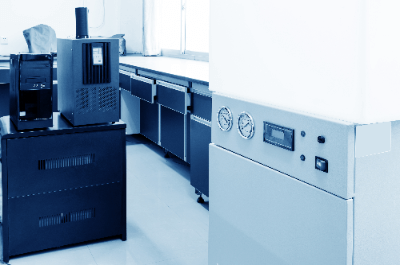What Is an Ultrapure Water System?
 An ultrapure water system is a device that produces ultrapure water. Natural water and tap water contain various salts and organic matter and are not ultrapure. In research and development, these impurities are likely to affect the results of experiments. In the manufacturing industry, impurities in water can affect product quality. Therefore, in these fields, ultrapure water from which impurities have been removed is used.
An ultrapure water system is a device that produces ultrapure water. Natural water and tap water contain various salts and organic matter and are not ultrapure. In research and development, these impurities are likely to affect the results of experiments. In the manufacturing industry, impurities in water can affect product quality. Therefore, in these fields, ultrapure water from which impurities have been removed is used.
Among pure water, ultrapure water is the one with the highest degree of purity. Water purity is measured based on electrical resistivity. Theoretical purity of water is 18.24 MΩ-cm. In common parlance, ultrapure water is water that has achieved 18 MΩ-cm.
Uses of Ultrapure Water Systems
Ultrapure water is used in the research and development field and in semiconductor manufacturing. In the research and development field, it is often used in biotechnology experiments and clinical trials of pharmaceuticals. In the semiconductor manufacturing industry, it is used for cleaning semiconductor parts and precision equipment.
However, ultrapure water cannot be stored in glass containers or polyethylene tanks. This is because its dissolving capacity is much higher than that of tap water and dissolves containers in minute quantities. Therefore, ultrapure water is produced by an Ultrapure Water System and used only when necessary and in necessary quantities.
Principle of Ultrapure Water Systems
Ultrapure water systems purify tap water to produce ultrapure water. In this section, the principle is explained using a reverse osmosis membrane + ion exchange pure water device as an example. This system uses the three steps of filtration, reverse osmosis, and ion exchange to produce an ultrapure water system.
1. Filtration
Powdered activated carbon filters filter out impurities such as residual chlorine and large debris in the tap water.
2. Reverse Osmosis
Filtered tap water is purified by reverse osmosis. Normally, when aqueous solutions of different concentrations are separated by a semipermeable membrane, water molecules move from the solution of lower concentration to the solution of higher concentration. This is called osmosis.
As water molecules move, a force called osmotic pressure is generated, which eventually reaches equilibrium with the gravitational force on the volume of water moved. In contrast, when a pressure higher than the osmotic pressure is applied, water molecules can be moved from an aqueous solution of higher concentration to aqueous solution of lower concentration. This phenomenon is called reverse osmosis.
In an ultrapure water system, high pressure is applied to tap water to transfer water molecules that do not contain impurities to produce pure water. An osmosis membrane that can purify water molecules by this reverse osmosis phenomenon is called a reverse osmosis membrane. The water purified here is already pure enough to be called pure water.
3. Ion Exchange
The aforementioned inorganic ions contained in trace amounts in pure water are removed by ion exchange. Ion exchange is a method of improving purity through the use of ion exchange resins. Pure water produced by reverse osmosis contains trace amounts of calcium and chlorine ions. By filtering this pure water through an ion exchange resin, the impurity ions are adsorbed by the resin and become ultrapure water.
This is the main principle of the ultrapure water system. Ultrapure water systems are also available that include a UV sterilization system after the ion exchange is completed. There are also various types of products that reuse ion exchange membranes or distill tap water.
Other Information on Ultrapure Water Systems
1. Industrial Applications of Ultrapure Water Systems
An ultrapure water system is used in the cleaning process of semiconductor devices, as mentioned above. If the cleaning water contains microscopic impurities, there is a risk of short-circuiting the circuit. Therefore, the ultrapure water system is an essential part of semiconductor manufacturing technology.
Other uses include water for steam generators in steam turbine generators and water for humidification in factories.
2. Precautions When Using Ultrapure Water Systems
The ultrapure water system is a delicate device, and there are several precautions that must be taken in order to obtain high-purity ultrapure water. As a general rule, water should be collected on an as-needed basis, and the initial flow of water should be drained. This is because there is a risk of contamination of the area around the water sampling port by outside air. To prevent contamination from the environment, it is also necessary to keep the water sampling port clean and to avoid bubbling when sampling.
Ultrapure water is also known as hungry water. The name is derived from its ability to take in substances. Because of this property, its electrical resistivity decreases over time. Therefore, ultrapure water should be used as soon as possible after collection.